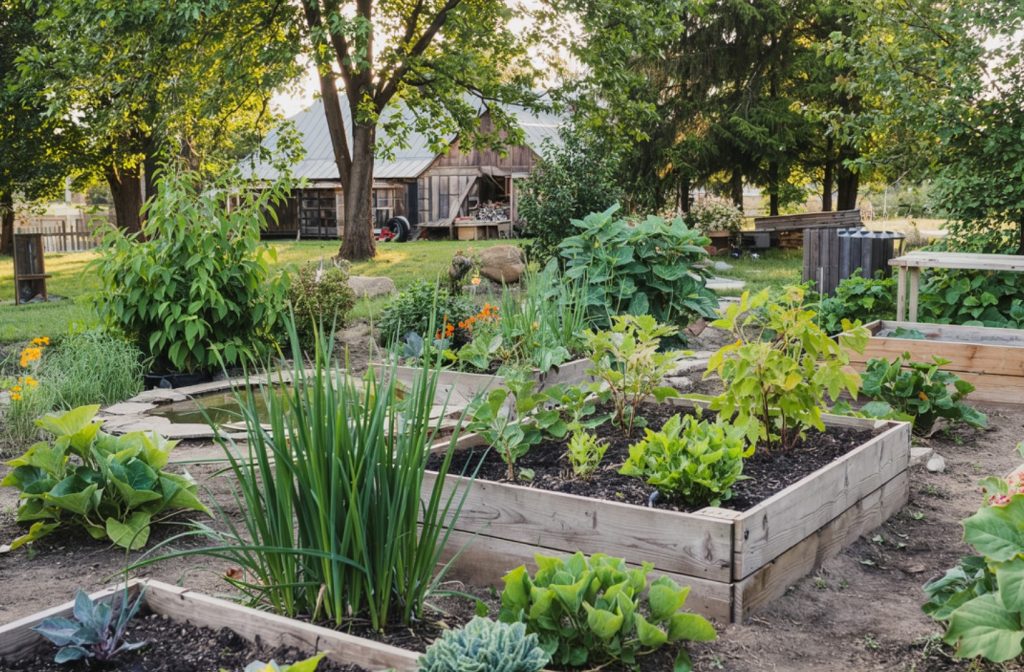Contrary to popular belief, permaculture gardening isn’t reserved for sprawling acres and endless hedgerows. With a sprinkle of ingenuity and a dash of dirt-under-the-nails enthusiasm, even a pocket-sized garden can be a flourishing, food-producing haven.
It’s about working with nature to optimize every square inch by designing spaces that nourish, regenerate, and delight. By layering plants, capturing rainwater, and mimicking natural ecosystems, even the tiniest plot can teem with life and abundance.
Whether you have a balcony, a courtyard, or a suburban patch of land, here are seven design ideas to help craft your small-space permaculture paradise.
1. The Keyhole Garden: Compact and Clever
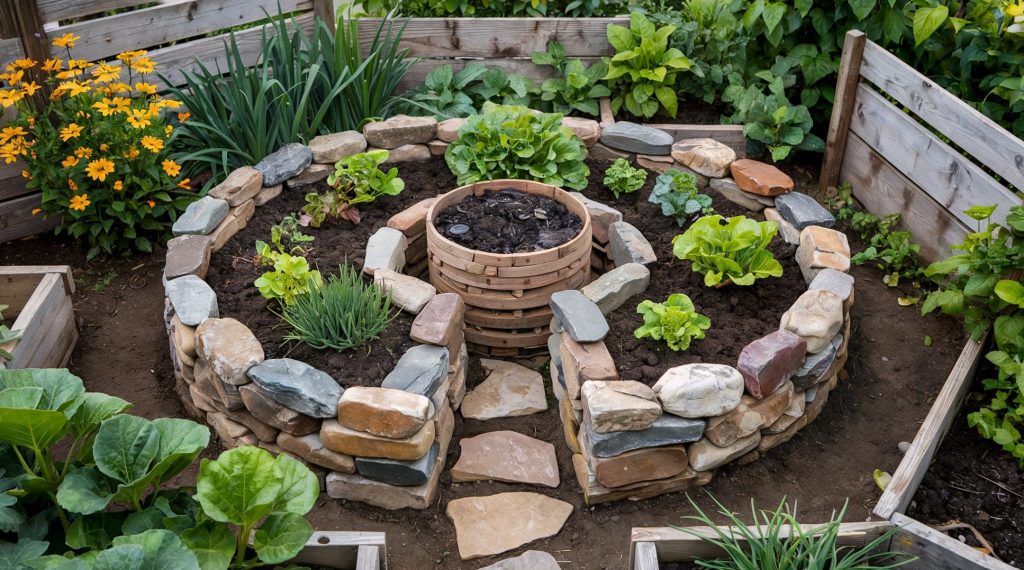
The keyhole garden is a darling of permaculture design—and for good reason. Shaped like an old-fashioned keyhole when viewed from above, it features a circular bed with a central DIY compost bin or basket and a small path that lets you reach every inch without trampling the soil.
Its brilliance lies in the synergy: kitchen scraps go into the compost basket, enriching the surrounding soil with nutrients while boosting microbial activity.
Water efficiency is heightened, and the bed’s raised edges make it ergonomic, ideal for tight corners or areas with poor soil. With one swift turn of the compost fork, you’re feeding both soil and soul.
2. Spiral Herb Garden with a Vertical Flavor
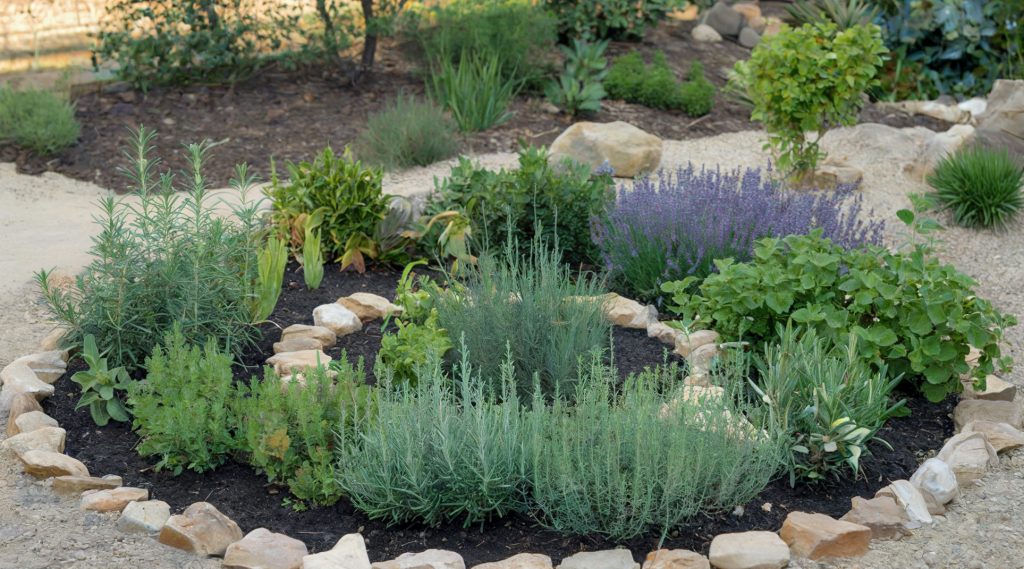
When square footage is scarce, go skyward. Although an herb spiral can be created at ground level, the vertical format can be even more stunning.
Create a spiral herb garden as a sculptural, spiraling mound of soil that winds upward, offering various microclimates for different herbs along its course. You can use stone, wood or other natural materials to build your tower — get creative!
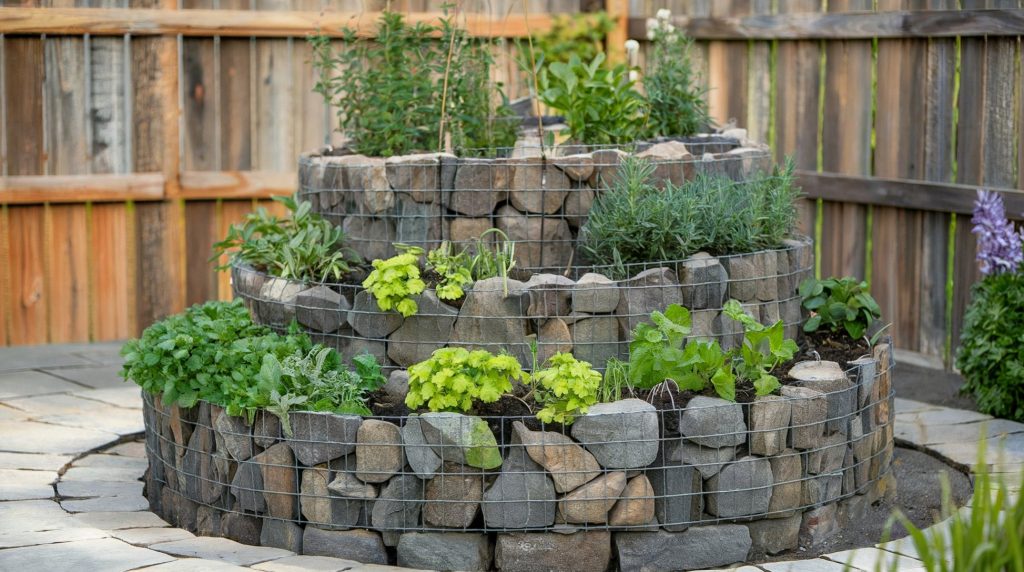
Thyme, oregano and rosemary bask in the sunny, well-drained top, while mint, chives, parsley and cilantro prefer the damper, shaded bottom curve.

This ingenious structure not only saves space but also makes watering smarter and more sustainable. Plus, it adds a whimsical touch—part fairytale, part functional farmstead.
3. Mandala Garden: Where Aesthetic Meets Efficiency

Inspired by sacred geometry, the mandala garden turns the ordinary vegetable patch into a meditative masterpiece. Radiating out from a central point, this layout includes curved or wedge-shaped beds separated by narrow paths—making all zones accessible without compacting the soil.
This layout is perfect for integrating companion planting, nutrient cycling, and natural pest control. The central point can host a pollinator-attracting flower, a birdbath, sculpture, or a fruiting shrub.
Check out this incredible mandala setup in Costa Rica:
Function dances with beauty in this intricate but manageable design that can be created flat on the ground, or in a raised-bed style as is featured in the image above.
4. Forest Garden Pockets Mimic Nature in Miniature
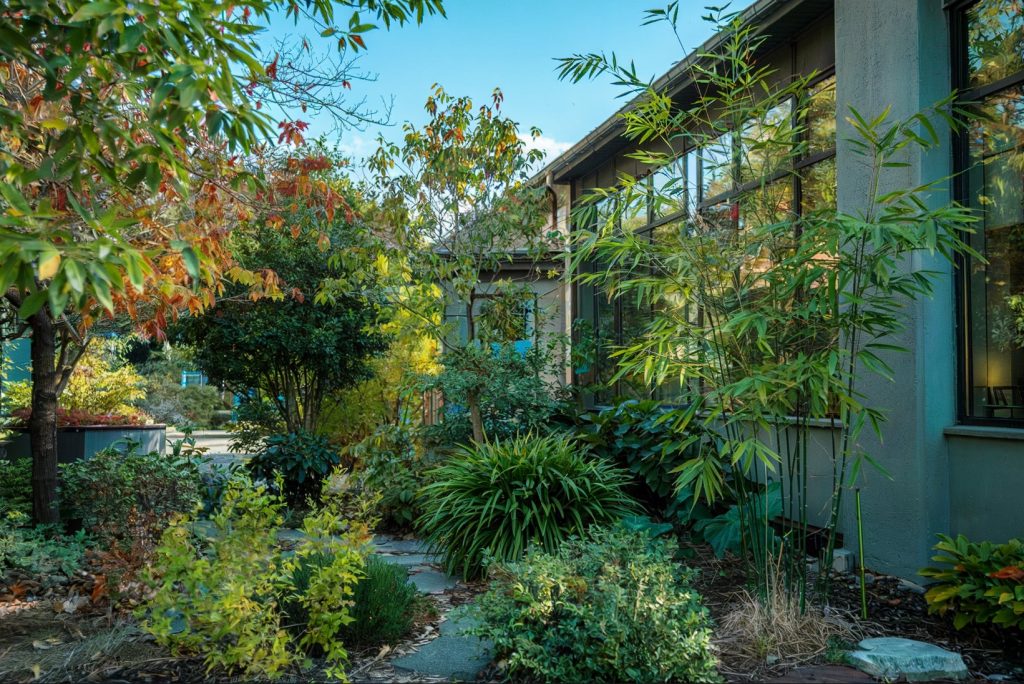
Even in a compact plot, the magic of the forest garden can be harnessed. This design layers plants in vertical strata: canopy, understory, shrub, herbaceous, groundcover, root, and climber.
Think dwarf fruit trees, berry bushes, perennial vegetables, nitrogen-fixing legumes, and trailing groundcovers all coexisting in a symbiotic tango.
This microcosm of a woodland ecosystem builds resilience, reduces input needs, and offers perennial productivity. Birds and beneficial insects find refuge, and weeds have less room to run wild. It’s like planting a symphony.
5. Raised Bed Zones for Order in Abundance

I previously covered the best ways to ensure that your raised-bed gardening is as productive as possible, but now I want to focus on the design choices.
Raised beds offer clarity in small spaces—a grid of abundance where each square can serve a distinct role. By rotating crops, interplanting fast and slow growers, and combining beneficial plant partnerships, raised beds can deliver impressive yields.
Organize by themes: a salad bed, a root crop bed, a medicinal herb bed. Edging the beds with pollinator-friendly flowers enhances biodiversity while adding charm. Modular, easy to manage, and ideal for beginners, this layout brings order without sacrificing the wild soul of permaculture.
6. Microponds and Rain Catchment Water Features
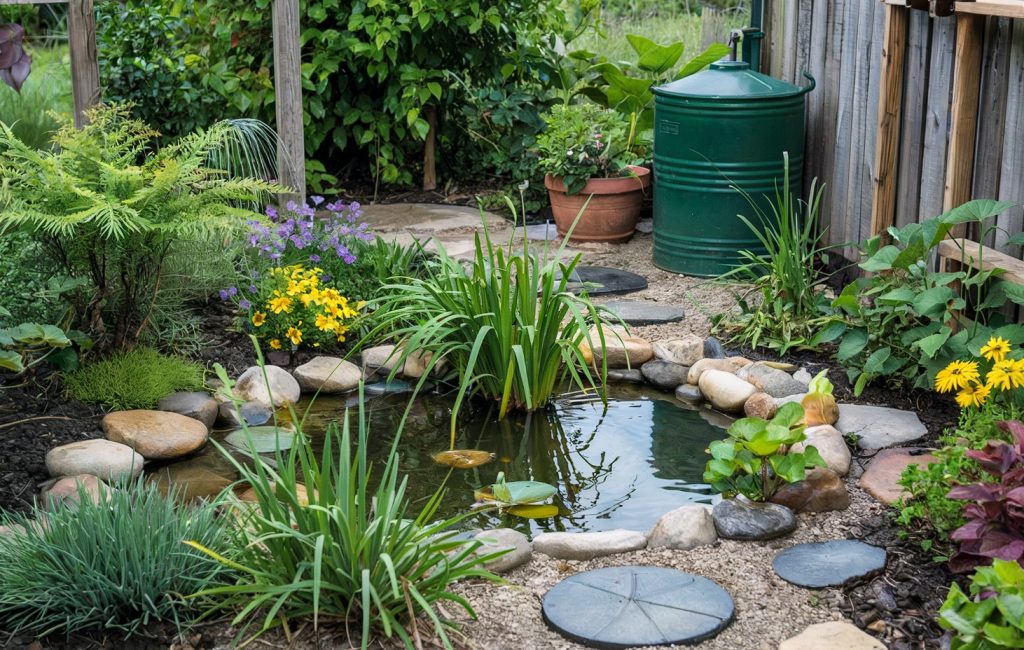
Water is life—and in a permaculture system, it’s a design element, not an afterthought. Even in small gardens, a micropond or a simple rain catchment barrel can transform the ecosystem.
Microponds invite dragonflies, frogs, and pollinators. Rain barrels reduce reliance on municipal water, storing precious rain for the dry spells.
If you have a bit more space, you can integrate swales or gentle depressions along paths to redirect and soak water where it’s needed most. The result? A self-watering garden with a vibrant heartbeat.
7. Perennial Power is The Backbone of Small-Space Sustainability

Annuals come and go, but perennials are the loyal companions of the permaculture world. In tight plots, low-maintenance, high-yield perennials like asparagus, rhubarb, sorrel, and Egyptian walking onions pull their weight year after year.
Add in flowers like Echinacea (Coneflower) which is drought-tolerant, pollinator-friendly, and stunning in purples and pinks (it’s also great for harvesting medicinal herb seeds). Black-eyed Susan (Rudbeckia) has cheerful yellow blooms that brighten borders and attract butterflies. Lupine’s tall, spiky blossoms offer a rainbow of colors that fix nitrogen in the soil.
Perennial herbs will round out the full package. Thyme is low-growing, fragrant, and a kitchen staple that thrives in sunny spots. Oregano is robust and flavorful, it spreads easily and is great for a range of dishes. Chives provide a mild onion flavor with pretty purple flowers that bees love.
These plants build soil, support local pollinators, and offer a reliable harvest without constant replanting. When combined with mulching and minimal tilling, they transform a small garden into a regenerative powerhouse.
Grow Big with a Small-Garden Mindset
A small permaculture garden is more than a productive patch—it’s a living, breathing classroom. Every leaf tells a story, every root is a rebel, every inch a chance to nurture and be nurtured.
Any one of the above approaches will pay dividends, but a full combination as space permits can offer a stupendous bounty that will reward you year after year.
With thoughtful layout choices and a reverence for nature’s rhythms, even the tiniest garden can bloom into something extraordinary. Grow where you’re planted—and let the abundance surprise you!
- Simple Recipes for DIY Herbal Salves and Balms
- Delicious One-Pot Homestead Meals from Pantry Staples
- 5 Best Meat Dehydrators for DIY Jerky on Amazon (2025)
- Urban Homestead Hacks from Backyard to Balcony
- Creative Strategies for Frugal Homesteading
Write A Guest Post For Us!
Are you passionate about gardening, raising livestock or preserving food? We’re excited to announce that we’re now accepting guest posts for all aspects of homesteading!

